Replacing old tires with retreaded tires is a good way to be economical and environmentally friendly. If the car tires remain intact in addition to normal wear and tear, they can be refurbished and used. This is also the best way to extend the life of the tire. The refurbishment process cannot be carried out in an ordinary auto repair shop, it requires special skills and expensive special equipment. In addition, refurbishment services are most suitable for large companies that need to consume a lot of tires, such as trucks, buses, taxis, and airplanes.
The retreaded tire once had a polished tread, and a new layer of tread will be vulcanized on top of it. This is a waste utilization method that prolongs the service life of auto tires. Although most retreaded tires are safe, it is still necessary to understand the difference between new and retreaded tires.
1. Check the "bias", "bias belted", or similar signs on the sidewall of the car tire. The laws of most countries require retread tires to be marked with this symbol to let consumers know what type of product they are buying.
2. Check the retreaded tires on large vehicles, such as trucks, trailers, etc. Retreaded tires are most commonly used on heavy vehicles that do not require long-distance driving. In fact, private cars rarely use retreaded tires. Observe the texture and density of the sidewall. The texture of the retreaded tire is blurry. In addition, darker tread or rough hand feel can be used as identification criteria.
3. Check the wrinkles on the sidewall. The retreaded car tires are vulcanized with a new layer of rubber on the original tread, so there will always be some marks.
4. The price factor. The price of retreaded tires is usually equivalent to 25-50% of new tires.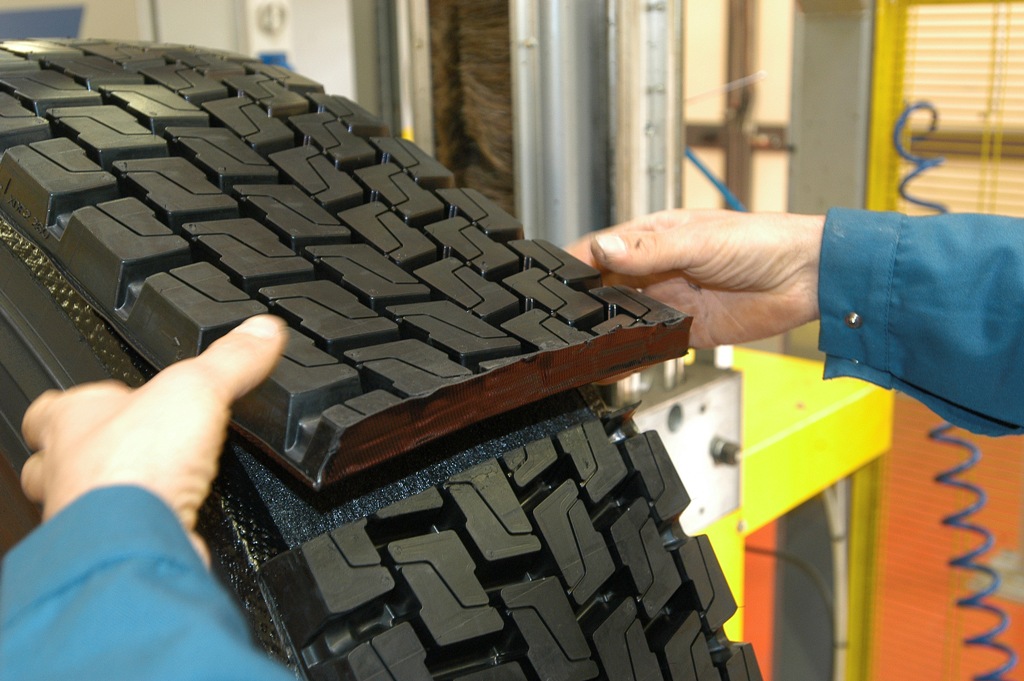
5. Check if there are any traces of polishing. Retreading car tires usually requires removing a portion of the original tread. If you check carefully, you will always see some traces of processing.
6. Check the adhesive on the car tires. Most tires use special vulcanized rubber to paste a new layer of tread on the original tread. Tire quality not only affects the formation of comfort, but also important for safety. Therefore, if you plan to buy retreaded tires, it is best to hand them to a reputable car tyres company.
Autogreen has world-class equipment, industry 4.0 factories, balanced rubber compounds, unique pattern designs and the best engineers. Autogreen car tires can maintain the best traction performance under various conditions. The tire series covers summer, all-season and winter tires. We also provide run-flat tires to allow you to move forward safely.
Related Products
Winter-max A1-WL5
Related News
China's Tire Sales Rise: Many Small Businesses in the Tire Industry Shut Down and Obsolete Production Capacity
What is the Flat Run Flat Tire?
Why Are Car Tires Black?
by Editorial Team
Retreaded tires have had their old treads smoothed away (after being damaged or rendered unusable) and a new pattern re-applied in their place. This extends the life of the tire considerably and recycles old rubber. Though most retreads are safe, you should still know how to tell the difference between retreads and new tires.
This extends the life of the tire considerably and recycles old rubber. Though most retreads are safe, you should still know how to tell the difference between retreads and new tires.
Check the tire's sidewalls for the words "bias," "bias belted" or something similar to indicate their status. Retreads are legally required to have these markings in most areas, which tell consumers what type of tires they are buying.
Search for tire retreads on larger vehicles, such as trailer trucks, construction equipment and even the wheels on airplanes. Retread tires are most popular in heavier vehicles and those which see a lot of travel. You are less likely to see them on passenger vehicles and privately owned cars for individuals.
Look for differences in texture and density between the tires' sidewalls and their tread. Retreads may have faint distinctions. Check whether the treads are darker, for example, or slightly rougher to the touch.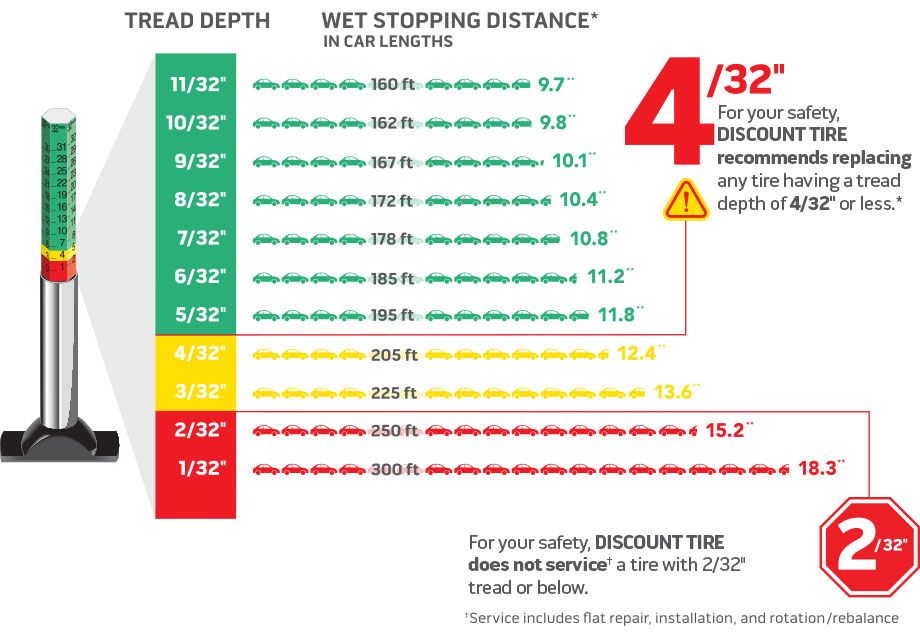 These differences are rarely significant, but they do appear.
These differences are rarely significant, but they do appear.
Check for seals or similar creases along the sidewalls of the tire. Retreads basically place a wrapping of new rubber where the original treads once were, as close to the original as possible and sealed into place before being vulcanized. A tiny seam or a bit of excess rubber is sometimes left after such a process.
Look at the price. A retread tire usually costs about 25 to 50 percent less than a new tire. Ask whether the cost is marked down because of a sale, or because the tires are retreads.
Inspect the tire for signs of buffing or smoothing. Tire retreads must often be buffed to remove the remnants of the original tread. Generally, these indicators remain unobtrusive, but if you check carefully, you may be able to see whether there are signs of the work in the texture of the tire.
Look for patches of cement or adhesive on the tire. Most retreads use cement to keep the new tread firm against the rest of the tire and sometimes little splotches can be seen on the surface.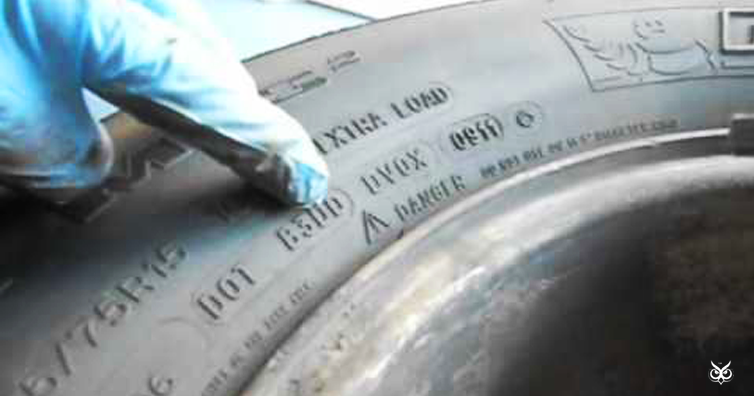
Tips
Writer Bio
This article was written by the CareerTrend team, copy edited and fact checked through a multi-point auditing system, in efforts to ensure our readers only receive the best information. To submit your questions or ideas, or to simply learn more about CareerTrend, contact us [here](http://careertrend.com/about-us).
In most of the most developed countries, there are companies that successfully prosper and provide a range of services for the restoration of worn-out car tires.
Even the world-famous high quality tire manufacturers also have subsidiaries specialized in the decent retreading of worn tires.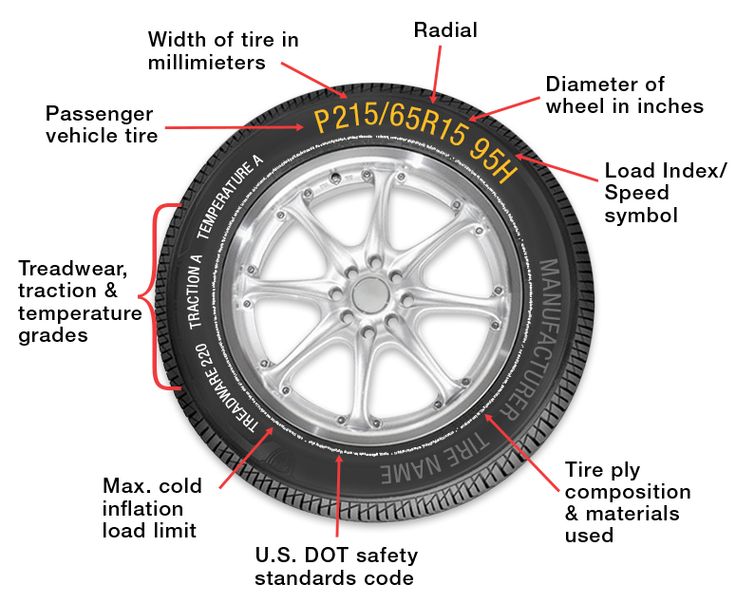 Thus, tires that are retreaded are returning to store shelves and are very worthy options for economical drivers, tempting them with their affordable price, which is very different from the price of similar car tires. But the following question involuntarily arises - is it safe to “shoe” your car in such tires?
Thus, tires that are retreaded are returning to store shelves and are very worthy options for economical drivers, tempting them with their affordable price, which is very different from the price of similar car tires. But the following question involuntarily arises - is it safe to “shoe” your car in such tires?
Content
Recently, governments have been trying to optimize the waste from automotive production as much as possible, so recyclable materials are utilized as much as possible to further save money and protect the environment.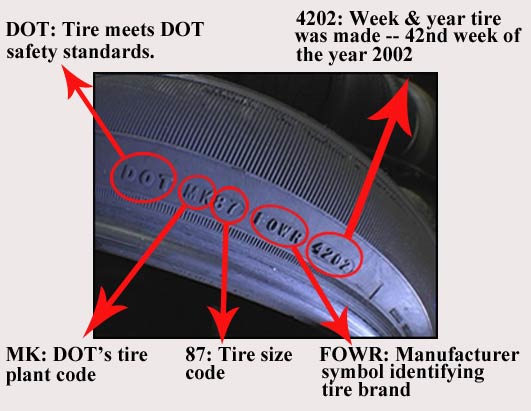 The new life of tires that have worked out their potential saves half of the total costs, and this, you will agree, is a significant amount. Automobile tires are restored by two main methods:
The new life of tires that have worked out their potential saves half of the total costs, and this, you will agree, is a significant amount. Automobile tires are restored by two main methods:
• Enlargement of the tread grooves with further creation of its pattern.
• Hot and cold retreading by adding new tread.
In the first method, the used tire is carefully cleaned and, according to the original tread pattern, is further deepened into the rubber layer, which naturally leads to its reduction. This method can not always be called safe, because the behavior of such tires on the roadway is simply unpredictable. The second method provides for two ways to develop further tire retreading:
• Cold build-up consists of gluing a new layer of rubber ring over the existing tread.
• Hot building involves applying an additional layer of rubber through vulcanization.
Repaired tires serve almost identically, but with the first method, you can reanimate the tire several times, but the second is less prone to marriage.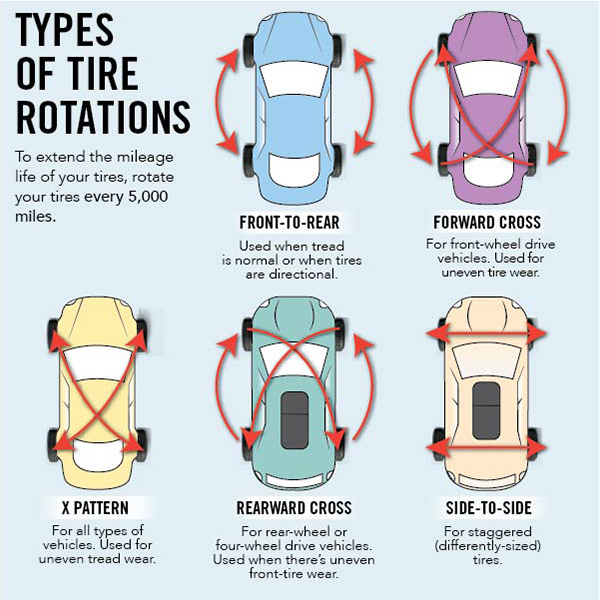
Unfortunately, not all tires can be restored. Here you need to take into account the state of their frames. Therefore, tires initially undergo diagnostics, during which all damages received during operation are analyzed. The inner and sides of the tire, its beads and crowns should be as intact as possible, since this is the key to further exploitation.
The second step is to remove the worn tread. The tire is placed in a special apparatus, where it is inflated with air, and the upper rubber layer is removed from it. The third stage is called roughening. On it, you can determine which wheels are badly worn out and weed them out. Tires that can be resuscitated eliminate minor flaws, in particular, cuts and punctures.
Restoring a rubber tread requires some skill. The new stackable rubber ring is covered with liquid rubber, which allows you to reliably and efficiently remove old damage, ensuring tight contact between the tread and the carcass.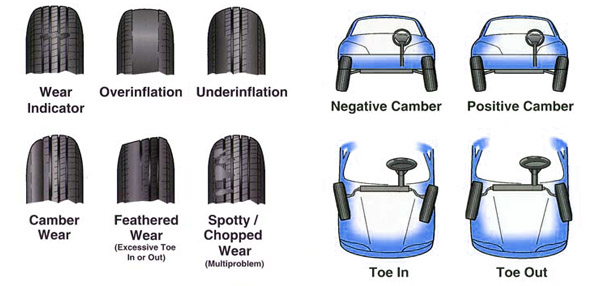 The wheel is primed with a manual extruder, then a tread with a specific pattern is applied. The rubber layer is cut around the circumference of the wheel on a fully inflated tire.
The wheel is primed with a manual extruder, then a tread with a specific pattern is applied. The rubber layer is cut around the circumference of the wheel on a fully inflated tire.
On special equipment, the tire is folded like an envelope and put on the rim and tube. Further, the restored tire is subject to vulcanization in an automated autoclave, where the tread ring is securely fastened, merging with the carcass together. The rim and the chamber are then dismantled. Further, the restored tire is re-diagnosed and equipped with a warranty card. Some car services give a guarantee for 100,000 km.
If you need to add studs to your tires, use the tire studding service and feel safe and comfortable on the road. Indeed, with an insufficient number of spikes, the road can be dangerous.
This method is similar to the previous one in several points:
1. Primary diagnosis.
2. Sherokhovka.
3. Basic repair.
4. Applying a new layer of rubber.
But, despite this, these processes for the restoration of car tires vary significantly. Using the previous method, it is possible to reanimate large-diameter car tires: tires for SUVs, trucks and large vehicles.
The hot method is carried out as follows: a simple rubber layer that has not vulcanized is applied to the worn tire. Next, the protector is applied at the time of vulcanization. The new tread pattern is applied to molds that work under high pressure and at a temperature of 140°C. Now this method is used very rarely, but it is optimal for cars and minibuses with tire sizes R13–R16.
If you encounter quality tires, then on the sidewall of the retreaded rubber you will see a special marker that indicates that the wheel has been given a second life. As a rule, it looks like the inscription Retread, Remould or Regummerat, depending on which version is English, American or German. If the restoration took place in Ukraine, then it will be possible to see the familiar word - "Vidnovlena".
You can also find other distinctive properties of tires that were subject to restoration. So, for example, a special mesh of microcracks on the sidewall of the tire, which was not touched by the restoration process. Rubber clots on the inside, which indicate the repair or elimination of a tire puncture. Be that as it may, a retreaded tire can be distinguished from a new one, the main thing is to carefully inspect the goods.
If you are faced with the choice of purchasing new or retreaded tyres, you should be aware of the risks associated with previously used tires. As you already know, there are several ways to restore car tires. A lot of money is spent on such a procedure, since it requires specialized equipment, trained personnel and high-quality restoration materials, preferably Ukrainian-made. It is not at all a secret that many motorists are more focused on products that are imported from abroad. After all, a worn tire, repaired by our materials, acquires questionable quality and reliability. But using foreign consumables is quite expensive.
It is allowed to retread passenger tires only with slight wear, but practice shows that this is simply impossible, and only units with good external data are subject to retreading. It is not always possible to balance a wheel with a retreaded tire, and this is a significant drawback.
So, if this technology has so many negative sides, then why is it used? Everything is actually not as sad as it might seem at first glance. A car with high mileage, knurled in a short time period, will be great to drive on reanimated tires. Intelligent craftsmen are able to quickly, efficiently and reliably restore such tires with the appropriate equipment. Remanufactured winter tires can save you a lot of money. Specialists can do the following:
1. Repair the cord with new threads.
2. Repair microcracks by heat sealing.
3. The most worn areas will be augmented by rolling or ultrasound.
4. The new layer on the tire will be glued so that the tire will look like new.
Subscribe to our feeds in social networks such as Facebook, Vkontakte, Instagram, Pinterest, Yandex Zen, Twitter and Telegram: all the most interesting automotive events collected in one place.
It is absolutely clear that the quality of welded tires can vary significantly. It's one thing when the restoration work is done by the manufacturer, it's another thing if "amateurs" did it. The easiest way to distinguish restored rubber is by the sidewall, which is usually not restored, and therefore scuffs and microcracks are noticeable on it. As for the branded welding, here the companies put the corresponding inscriptions on the product:
If there is no such marker on the surface of the wheel, this means that the rubber could be restored anywhere. Therefore, it is better to refrain from such an acquisition. The difference in the cost of a retreaded and a new tire of the same model and manufacturer ranges from 30 to 70 percent. At the same time, everyone who wants to save money should be aware that it will not be possible to achieve the initial characteristics of rubber by reconstructing the tread part. In addition, the use of tires from different manufacturers, albeit of the same size and with the same welded tread, leads to a decrease in directional stability and controllability.
If the car owner is faced with the choice of buying new or retreaded tires, he must be aware of all the risks that previously used tires are exposed to. As mentioned above, there are several methods for restoring automotive rubber. A lot of money is spent on such an event, since specialized equipment, high-quality restoration materials and trained personnel are needed.
It's no secret that most motorists are more focused on products imported from abroad, because a worn tire, repaired with our materials, gets questionable reliability and quality. However, the use of foreign consumables is quite expensive.
Restoring light tires is allowed only with slight wear, however, as practice shows, this is simply impossible, and only units with optimal external data are subject to restoration. In addition, it is not always possible to balance wheels with retreaded tires, and this is a significant drawback.
First of all, it should be clear that retreaded tires are tires whose worn tread has been welded on with a new layer. We note right away that only the top layer of the tread is restored in this way, while tires with worn-out sidewalls are not suitable for such restoration in 90%! cases.
During welding, the tread pattern changes, but the changes do not affect the belt, carcass, or other load-bearing elements of the tire structure. In fact, this is a redecoration of a tire, in which similar protectors can be welded onto products of any manufacturer. At the same time, no one guarantees a complete coincidence of the obtained characteristics in two, outwardly identical, retreaded tires. Therefore, installing them on one axle, there is a risk that, in addition to reduced (compared to new tires) characteristics, welded tires will most likely have different weight and stiffness, as well as other parameters, for example, temperature operation.
Properly retreaded tires can last as long as new tyres, manufacturers say, and some auto repair shops offer a 100,000-kilometer warranty on their retreaded tires.
Our opinion is that the option of such tires can only be considered in the case of a spare tire, for example, if you don’t have it, it already stands instead of a punctured wheel, or you changed the wheels to a larger, smaller radius and did not have time to buy a spare tire.
As a last resort, this is also suitable if you mainly drive in the city no more than 60 km. at one o'clock. Because on the track there is a different speed and load on the wheels, saving a couple of thousand on a wheel and being in a ditch is a so-so prospect.
Contents
High-quality car tires from well-known manufacturers are quite expensive, so responsible drivers save money in advance for future tire changes.
The market is growing rapidly with a variety of options. At the same time, the cost of the same rubber model can vary by 30-50%. This indicates the dominance of fakes, restored protectors. How to determine high-quality rubber, every car owner should know.
Today, tire retreading is carried out using burnt rubber technology. It involves updating only the tread, and the side parts remain in their original form, along with markings and company logos.
If you look closely at the sidewalls of retreaded tires, you can easily detect microcracks on their surface. In addition, the updated areas are darker in color. If you rub them on the floor, then black marks remain.
Among the vast array of artisanal retreaded tires, you can also find official examples. In this case, the inscriptions are applied: "Restored", Retread, Remould, Regummerad. This can be the basis for purchasing rubber at competitive prices.
Otherwise, a makeshift tire installed on a car poses a real threat to life.
If we consider fakes, then we can only talk about external similarity. Production technology, frame structure, materials are completely different. Against the background of a tendency to high wear and lack of comfort, such specimens are characterized by complete unpredictability. Despite the low cost, it is not safe to buy them.
When choosing high-quality tires, it is important to pay special attention to neat appearance, full labeling, the absence of errors in brand names, and compliance of the tread pattern with factory standards.
When choosing car tires, it is important to carefully study the inscriptions on the sidewalls.
Genuine branded rubber is characterized by the fact that along the entire circumference, indicators of the location of wear indicators are evenly applied, which must be at least six. Either bulging arrows or the abbreviation TWI are required. Sometimes even a combination of these two characters is applied. To perform such inscriptions, special equipment of high precision is required.
If the tire complies with European standards, then this is confirmed by the Latin letter "E", which is located inside the circle. Next to it is a number from 1 to 15, which indicates the country of manufacture. On the side of the rubber, data about the brand, model, dimensions, profile height are always applied.
All inscriptions must be characterized by neat contours, the same height, and clarity of application. If the marking suffers from blurring, then it is better to refuse such a purchase.
Determining the quality of winter tires is easier than assessing summer tires. To do this, you need to put the protector in a vertical position and press with a hard object directly on the spikes. If they are slightly recessed when pressed, this indicates good quality.
The mobility of the studs is an important characteristic that reduces noise and provides good grip on dry road surfaces. On the other hand, the immobility of metal elements indicates a fake.
Any serious manufacturer confirms the quality of their products through certification. This fully applies to manufacturers of automotive rubber. Quality branded tires are never sold without accompanying documentation.
When purchasing this product, each buyer has the right to demand documentation confirming the authenticity of the product.
It must contain a bill of lading, a certificate for tires with an appendix indicating tests, technical measurements of a particular rubber for safety.
A genuine branded product cannot be cheap. The price is made up of high-quality materials for manufacturing, technologies that are used in production. Adequate cost guarantees quality, safety and durability, so if you want to buy high-quality tires, you should not chase the minimum price tag.
Thus, if Brigestone, Continental, Michelin protectors are offered at unusually low prices, then in no case should one “swallow” such bait of scammers.